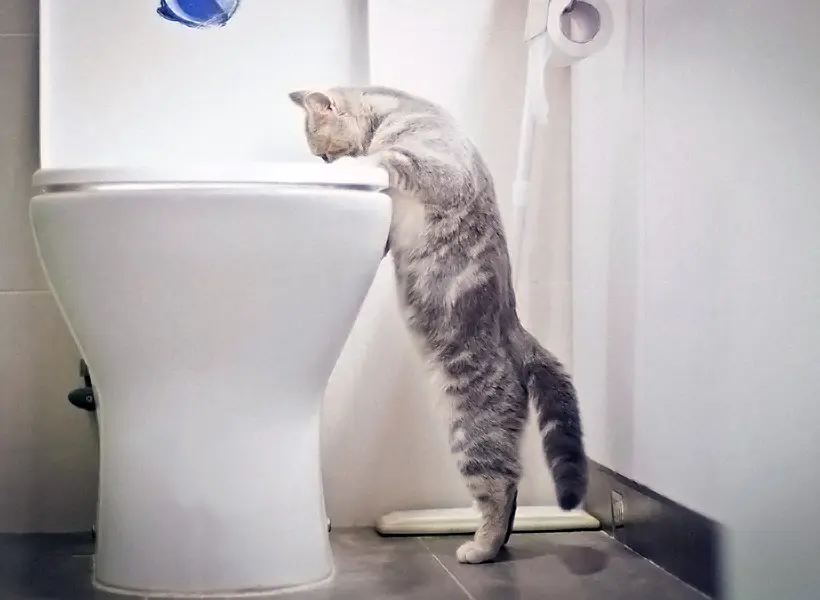Reasons Flushing Cat Poop Down Your Toilet May Cause Problems - Tips for Safe Disposal
Reasons Flushing Cat Poop Down Your Toilet May Cause Problems - Tips for Safe Disposal
Blog Article
Here in the next paragraph you can locate lots of wonderful answers around How to Dispose of Cat Poop and Litter Without Plastic Bags.

Introduction
As pet cat proprietors, it's vital to bear in mind how we throw away our feline good friends' waste. While it might seem practical to purge pet cat poop down the bathroom, this practice can have damaging consequences for both the environment and human health and wellness.
Alternatives to Flushing
Thankfully, there are more secure and more accountable means to throw away feline poop. Take into consideration the following alternatives:
1. Scoop and Dispose in Trash
One of the most common method of disposing of feline poop is to scoop it into a naturally degradable bag and throw it in the garbage. Be sure to utilize a dedicated clutter scoop and throw away the waste without delay.
2. Use Biodegradable Litter
Choose eco-friendly feline clutter made from products such as corn or wheat. These trashes are eco-friendly and can be securely disposed of in the garbage.
3. Hide in the Yard
If you have a backyard, think about hiding cat waste in a designated location far from vegetable yards and water resources. Make sure to dig deep enough to avoid contamination of groundwater.
4. Set Up a Pet Waste Disposal System
Purchase a pet garbage disposal system specifically designed for pet cat waste. These systems use enzymes to break down the waste, minimizing odor and environmental impact.
Wellness Risks
In addition to ecological problems, flushing cat waste can also present health and wellness risks to humans. Cat feces may include Toxoplasma gondii, a bloodsucker that can trigger toxoplasmosis-- a possibly severe health problem, specifically for expecting females and individuals with damaged immune systems.
Ecological Impact
Purging cat poop introduces harmful microorganisms and bloodsuckers right into the water system, presenting a significant danger to aquatic ecological communities. These pollutants can negatively impact aquatic life and compromise water top quality.
Final thought
Liable family pet ownership expands beyond offering food and shelter-- it also includes appropriate waste monitoring. By refraining from purging feline poop down the bathroom and selecting alternate disposal approaches, we can decrease our environmental impact and shield human wellness.
Why Can’t I Flush Cat Poop?
It Spreads a Parasite
Cats are frequently infected with a parasite called toxoplasma gondii. The parasite causes an infection called toxoplasmosis. It is usually harmless to cats. The parasite only uses cat poop as a host for its eggs. Otherwise, the cat’s immune system usually keeps the infection at low enough levels to maintain its own health. But it does not stop the develop of eggs. These eggs are tiny and surprisingly tough. They may survive for a year before they begin to grow. But that’s the problem.
Our wastewater system is not designed to deal with toxoplasmosis eggs. Instead, most eggs will flush from your toilet into sewers and wastewater management plants. After the sewage is treated for many other harmful things in it, it is typically released into local rivers, lakes, or oceans. Here, the toxoplasmosis eggs can find new hosts, including starfish, crabs, otters, and many other wildlife. For many, this is a significant risk to their health. Toxoplasmosis can also end up infecting water sources that are important for agriculture, which means our deer, pigs, and sheep can get infected too.
Is There Risk to Humans?
There can be a risk to human life from flushing cat poop down the toilet. If you do so, the parasites from your cat’s poop can end up in shellfish, game animals, or livestock. If this meat is then served raw or undercooked, the people who eat it can get sick.
In fact, according to the CDC, 40 million people in the United States are infected with toxoplasma gondii. They get it from exposure to infected seafood, or from some kind of cat poop contamination, like drinking from a stream that is contaminated or touching anything that has come into contact with cat poop. That includes just cleaning a cat litter box.
Most people who get infected with these parasites will not develop any symptoms. However, for pregnant women or for those with compromised immune systems, the parasite can cause severe health problems.
How to Handle Cat Poop
The best way to handle cat poop is actually to clean the box more often. The eggs that the parasite sheds will not become active until one to five days after the cat poops. That means that if you clean daily, you’re much less likely to come into direct contact with infectious eggs.
That said, always dispose of cat poop in the garbage and not down the toilet. Wash your hands before and after you clean the litter box, and bring the bag of poop right outside to your garbage bins.
https://trenchlesssolutionsusa.com/why-cant-i-flush-cat-poop/

As a reader about Can You Flush Cat Poo or Litter Down the Toilet?, I thought sharing that chunk was beneficial. Do you know another person who is involved in the subject? Feel free to share it. Many thanks for going through it.
Request A Quote Report this page